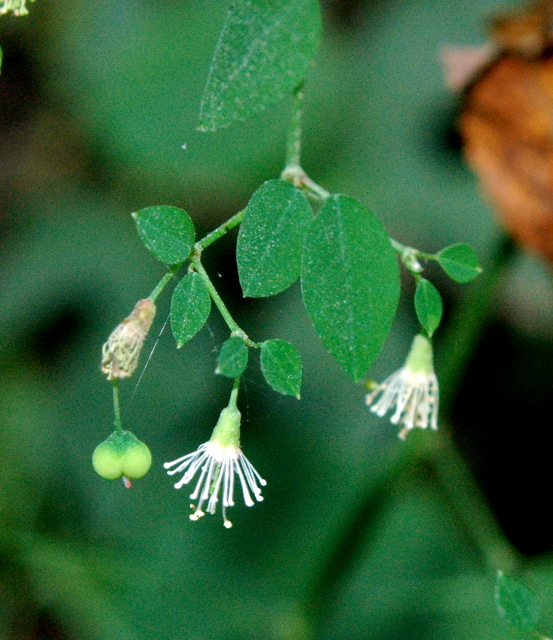
|
Euphorbia - Fieldwork Activities | |||||||||||||||||||||
Home Project Participants About Euphorbia Fieldwork News Data Portal Interactive Key Links Contact Us | Mexico, Oct-Nov 2009 Participants: Pablo Carrillo-Reyes, Feliciano García-Lara, Eva Piedra-Malagón, Alfredo Sánchez, and Hugo de la Rosa, Claudia Gallardo, and Dánae Cabrera-Toledo. Trip account by P. Carrillo-Reyes. I planned two trips within Mexico to get several interesting or poorly known species of Euphorbia from the states of Tamaulipas, Morelos, Jalisco, and Nayarit. In Morelos I was kindly helped by Feliciano García-Lara, who is the director of the Ethnobotanical Garden of Cuernavaca. We spent a day exploring the humid cliffs near the old train station "El Parque", where C.G. Pringle used to have his base when collecting in the area. Unfortunately, our primary species of interest, E. muscicola, known only from a pair of Pringle's collections, could not be located. However, we did find some other species such as E. ariensis, E. dentata, E. macropus, and a member of the E. multiseta complex.
Two days later I met with Eva Piedra-Malagón, a graduate student from the Instituto de Ecología in Xalapa, and we headed north to Tamaulipas. Eva is studying Phylogeography of hawthorns (Crataegus) and wanted to look for some populations in northern Mexico, so we decided to travel together. In Ciudad Victoria two undergraduate biology students, Alfredo Sánchez and Hugo de la Rosa, joined our journey. We started our botanical exploration climbing the Sierra del Cielo from the east side, in the municipality of Gómez Farías, looking for a new species of the E. multiseta complex, which was very difficult to find. We continued driving for four hours along a dirty, lonely and stony road. We arrived at Rancho Julilo, which has a single house in the middle of a wonderful cloud forest. We spent the afternoon looking around, and decided to stay at the Rancho Julilo for the night. The next day we left very early to search again, and after two hours we finally found our plant growing on a limestone outcrop. After taking pictures and collecting samples, we headed toward the Jaumave Valley where we arrived late that night. On our way to Jaumave we realized that the new species was more common in the upper and drier parts of the sierra. Many other more common Euphorbia species were collected as we travelled through this area: E. graminea, E. densiflora, E. macropus, E. nutans, E. villifera, and E mendezii. The next day we went to Los Nogales, the headwaters of the Guayalejo River; a beautiful, deep and abrupt canyon covered with xerophytic vegetation. On the rocky walls of this canyon were several dozen green macaws' nests and every morning they fed in the nut trees of downtown Jaumave. Here we were looking for a new succulent species related to E. antisiphylitica; we were successful, but the plants were sterile. We collected a couple of these plants to maintain them in cultivation until they flower. Some other species were also collected in the area: E. cinerescens, E. cymosa, E. berteroana, E. villifera, and a species of the Poinsettia group to be determined.
In my second trip, I was accompanied and assisted by Claudia Gallardo-Hernández, a botanist from the Instituto de Ecología and my wife Dánae Cabrera-Toledo, who studies genetics of Cycads. We spent a week collecting in southern Nayarit and adjacent Jalisco, mostly in the northern coast. The main goal of this trip was to collect the enigmatic E. oppositifolia, which is only known from its poor type collection made in a remote area about 40 years ago, when dirt roads did not exist. We arrived from Puerto Vallarta to Las Mesas, a small village, where a friendly local man allowed us to set our tent in his patio. He also took us to the old paths where the collector of the type specimens, who lived in the area for many years, used to walk. After three unsuccessful days in the area searching in many ravines, we decided to head to Talpa and look for the rest of the species following our plan. Though we were apparently at the right place and season, it was very frustrating not being able to find E. oppositifolia. On the other hand, we located, collected, and photographed many other interesting Euphorbia species such as E. guadalajarana, E. mexiae, E. colligata, E. pulcherrima, E. multiseta, E. soobyi, and E. lineata. Additionally, many other common species were also collected: E. novogaliciana, E. graminea and many species from E. subgenus Chamaesyce.
| © PBI Euphorbia Project | ||||||||||||||||||||







